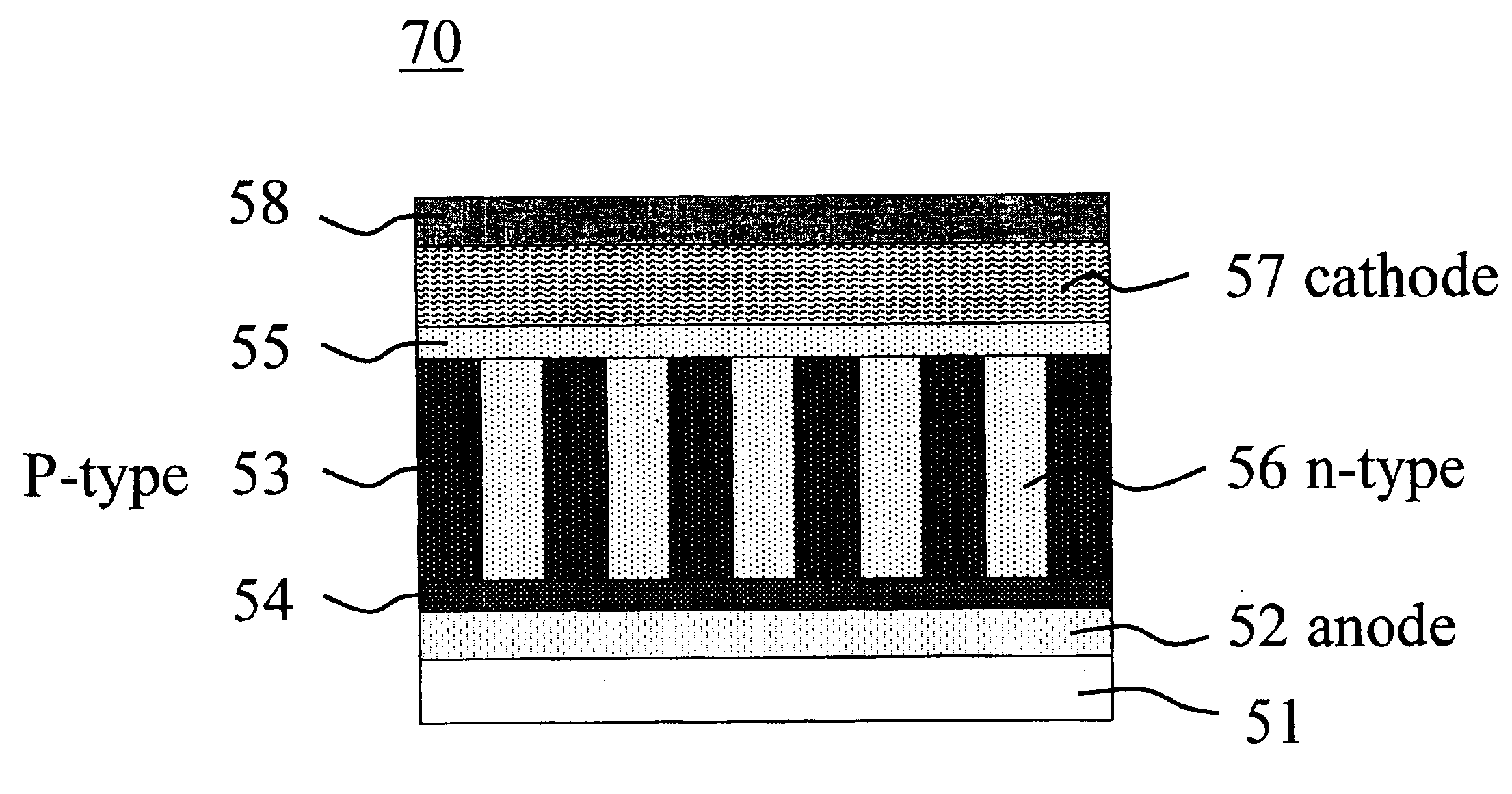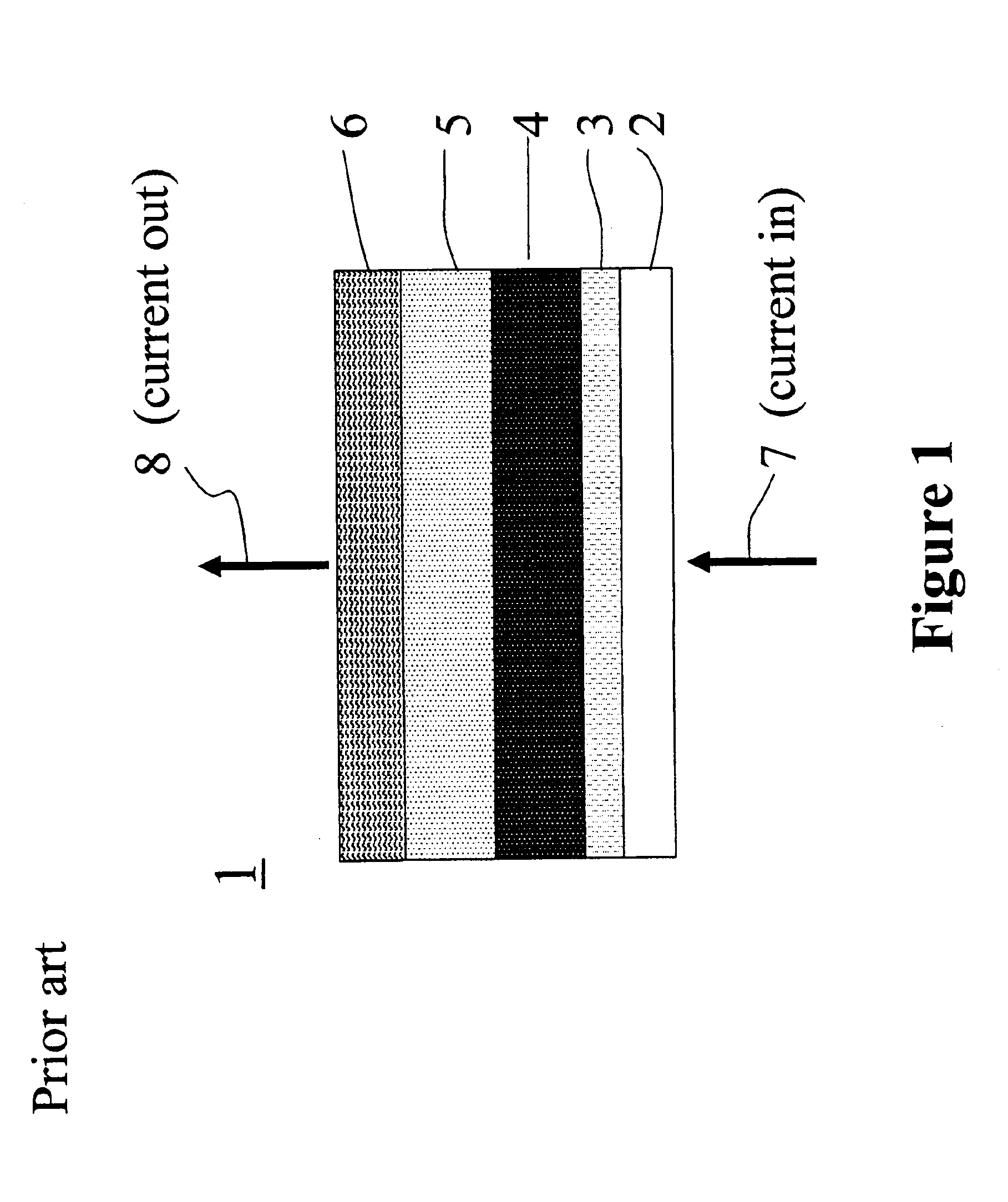Organic semiconductor devices and methods of fabrication
a technology of organic semiconductors and semiconductor devices, applied in semiconductor devices, solid-state devices, thermoelectric devices, etc., can solve the problems of inability to achieve inorganic semiconductor-based devices, the efficiency and operation stability of hetrojunction systems are still far below what has been achieved with inorganic semiconductor-based devices, and the complexity of fullerence derivative fabrication
- Summary
- Abstract
- Description
- Claims
- Application Information
AI Technical Summary
Problems solved by technology
Method used
Image
Examples
example 1
Formation of Zeolite Membrane by Steaming Method
[0037]Weigh about 0.610 g of sodium hydroxide pellets and finely grind the pellets with a mortar and pestle. Place this mixture in a 250 ml beaker, and add 2.01 g of water glass containing 40% silica in water and 1.01 g of tetrapropylammonium bromide. Mix with 5.0 ml distilled water, then add 1.0 ml of n-propylamine and mix the solution again.
[0038]Place 1.0 ml of a prepared 1 molar solution of aluminum sulfate along with about 0.05 ml of the concentrated sulfuric acid in a separate 50 ml beaker. Then add the first solution to this beaker as well. Add enough distilled water to raise the volume to about 25 ml, and mix the solution (26 ml total volume) on a stir plate for ten minutes, yield a stable homogeneous dispersion.
[0039]Spin coat the dispersion onto a pre-clean ITO glass to have a gel-like coat layer. Then place the whole part into a stainless steel tube and carefully steam it for 2 hours at a proper pressure.
[0040]After steaming...
example 2
Introduction of Conducting Polymers Precursor into Zeolite Membranes
[0042]The zeolite membrane on ITO glass obtained from example 1 is placed in a glass tube, aniline vapor in nitrogen media is pass through the tube for 4 hours, which introduce aniline molecules into pores of zeolite membrane.
example 3
Formation of Conducting Polymers Inside Zeolite Membranes
[0043]Following example 2, hydrochloric acid vapor in nitrogen media is then passed through the glass tube with the sample obtained in Example 2. This initiates the polymerization of aniline molecules inside zeolite pores and forms conducting polyaniline inside zeolite channels.
PUM
| Property | Measurement | Unit |
|---|---|---|
| thickness | aaaaa | aaaaa |
| thickness | aaaaa | aaaaa |
| thickness | aaaaa | aaaaa |
Abstract
Description
Claims
Application Information
 Login to View More
Login to View More - R&D
- Intellectual Property
- Life Sciences
- Materials
- Tech Scout
- Unparalleled Data Quality
- Higher Quality Content
- 60% Fewer Hallucinations
Browse by: Latest US Patents, China's latest patents, Technical Efficacy Thesaurus, Application Domain, Technology Topic, Popular Technical Reports.
© 2025 PatSnap. All rights reserved.Legal|Privacy policy|Modern Slavery Act Transparency Statement|Sitemap|About US| Contact US: help@patsnap.com



